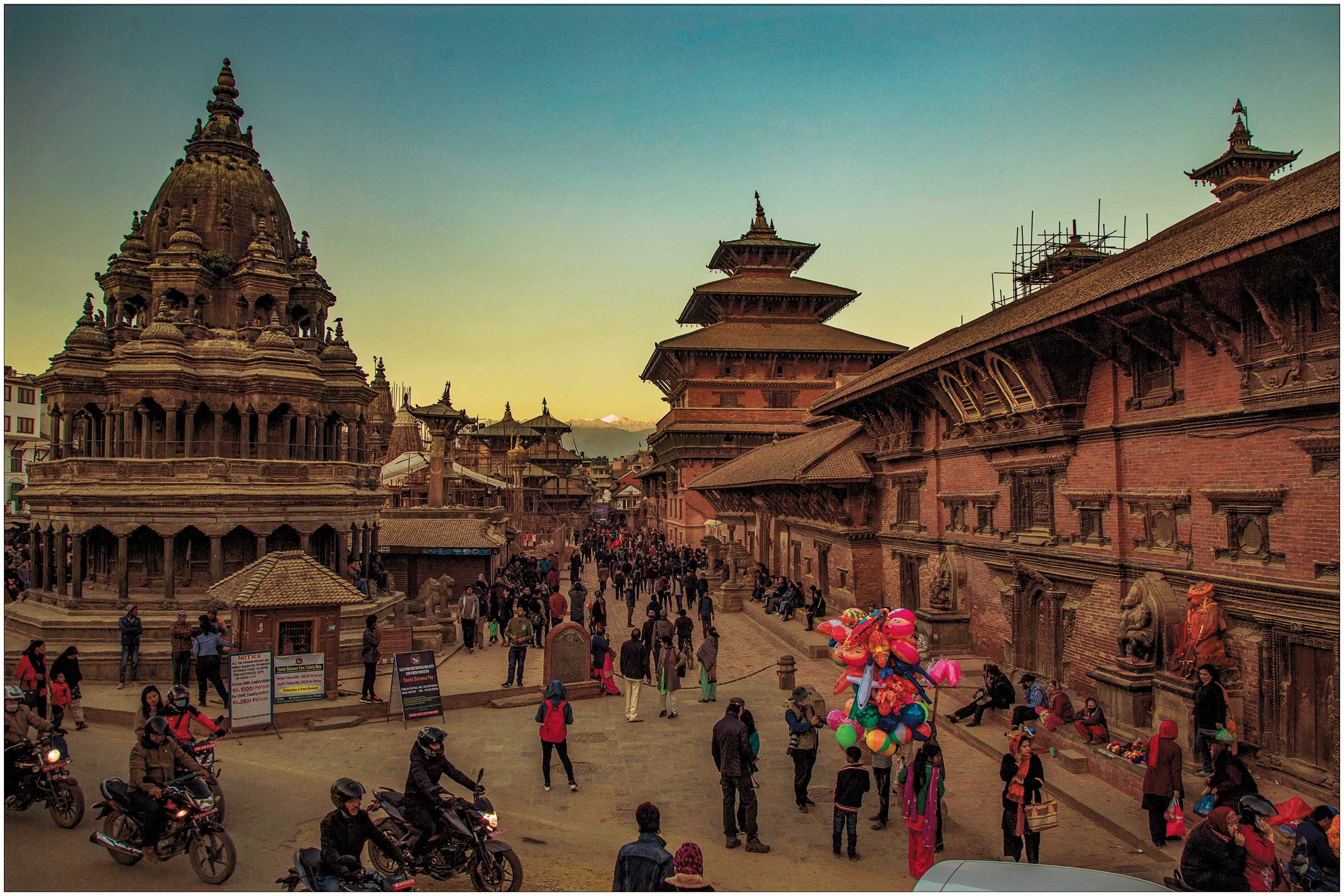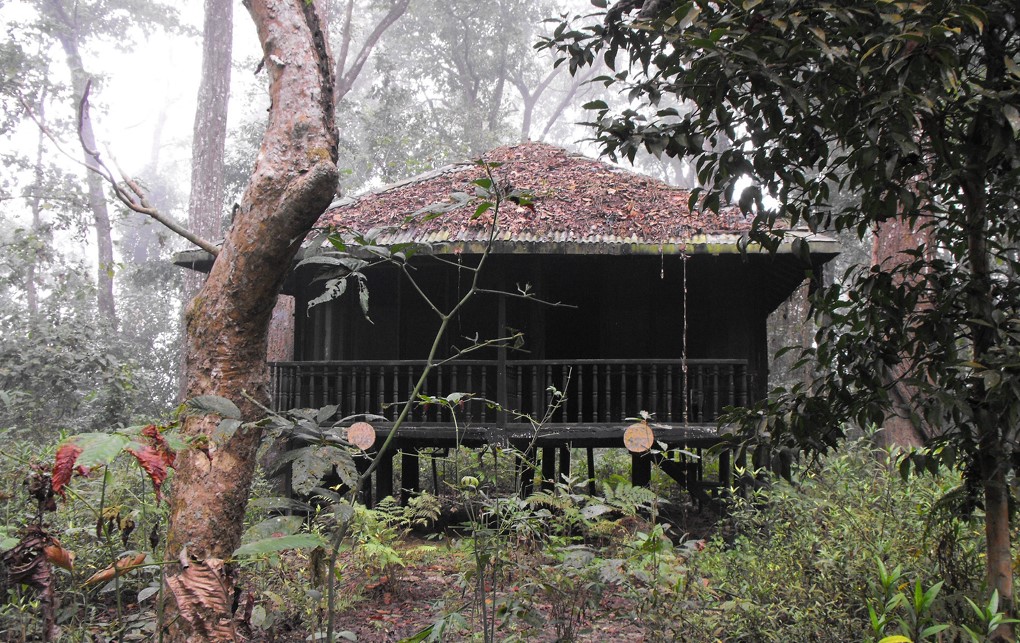.gif)
Off the bustling streets, and into a world nearly forgotten...
As you walk a few minutes south from the perpetually jammed streets of Teku, near the banks of Bagmati, you come across a long-standing temple dedicated to a fierce deity devoutly worshipped among the Newar clans of the valley. Walking through the blue gates and golden arches of the temple, you can see the courtyard is still relatively lively even at 11:00 a.m. on a weekday. On one side of the courtyard are old men sitting around talking about anything and everything under the sun, while on the other side there is an old woman enjoying the warm winter sun. Pigeons are pecking at the scattered grains on the courtyard, and a rooster or two are simply wandering around. The atmosphere can only be described as quaint.
.gif)
The temple itself is more of an open sanctuary, rather than a building, and it lies slightly below ground level. When you walk down the steps, the first thing you see is a large bronze statue of the deity Betal lying on the ground. When we came in, there were fresh blood spatters all around the statue, which seemed apropos given where we were. The statue of the main deity was still a few more steps below ground. Even at 11:00, there were still a few straggling worshippers performing puja, while the caretakers were busy cleaning up the flowers, grains, and all the debris in the temple.
This temple is considered to be one of the most ancient temples in Kathmandu, and its worship is said to have been started by King Gunakam Deva, who lived from A.D. 924-1008. Worshippers usually gather here on Tuesday or Saturday, although we can confirm it is still somewhat abuzz on other days, as well.
There are many myths associated with this temple, one of which is that, this deity was the king of Pharping. He used to lock himself in a room everyday and eat a lot of rice and meat. One day, his wife grew curious. He agreed to appease her curiosity on the condition that she would throw some rice at him after seeing his real identity. However, the wife grew scared after seeing his true form, and ran away. Afraid that his true form would be discovered, he came and took refuge in this place.
This deity is worshipped by twelve families of farmers, who look upon the deity as their clan deity. Each year, the responsibility of the vessel for the deity is transferred from one family to another during the festival of Dashian. There is also a jatra that takes place in honor of this deity every four years.










